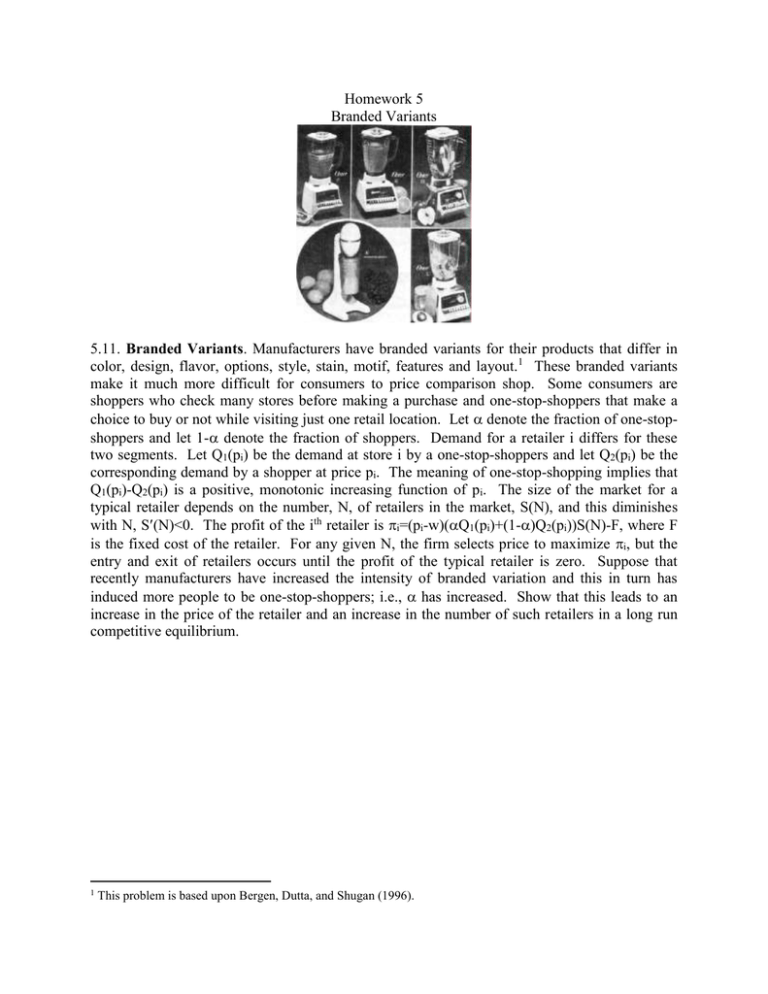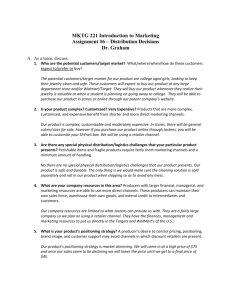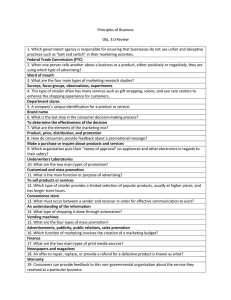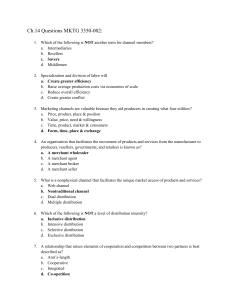Homework 5 Branded Variants Branded Variants
advertisement

Homework 5 Branded Variants 5.11. Branded Variants. Manufacturers have branded variants for their products that differ in color, design, flavor, options, style, stain, motif, features and layout.1 These branded variants make it much more difficult for consumers to price comparison shop. Some consumers are shoppers who check many stores before making a purchase and one-stop-shoppers that make a choice to buy or not while visiting just one retail location. Let denote the fraction of one-stopshoppers and let 1- denote the fraction of shoppers. Demand for a retailer i differs for these two segments. Let Q1(pi) be the demand at store i by a one-stop-shoppers and let Q2(pi) be the corresponding demand by a shopper at price pi. The meaning of one-stop-shopping implies that Q1(pi)-Q2(pi) is a positive, monotonic increasing function of pi. The size of the market for a typical retailer depends on the number, N, of retailers in the market, S(N), and this diminishes with N, S(N)<0. The profit of the ith retailer is i=(pi-w)(Q1(pi)+(1-)Q2(pi))S(N)-F, where F is the fixed cost of the retailer. For any given N, the firm selects price to maximize i, but the entry and exit of retailers occurs until the profit of the typical retailer is zero. Suppose that recently manufacturers have increased the intensity of branded variation and this in turn has induced more people to be one-stop-shoppers; i.e., has increased. Show that this leads to an increase in the price of the retailer and an increase in the number of such retailers in a long run competitive equilibrium. 1 This problem is based upon Bergen, Dutta, and Shugan (1996).





